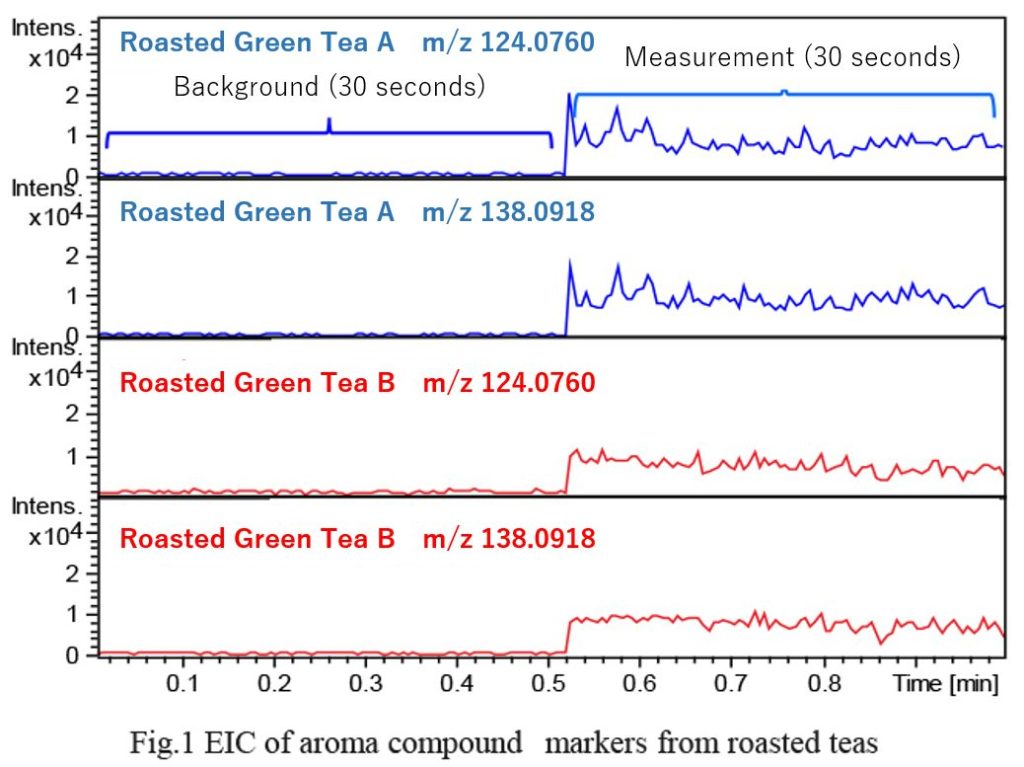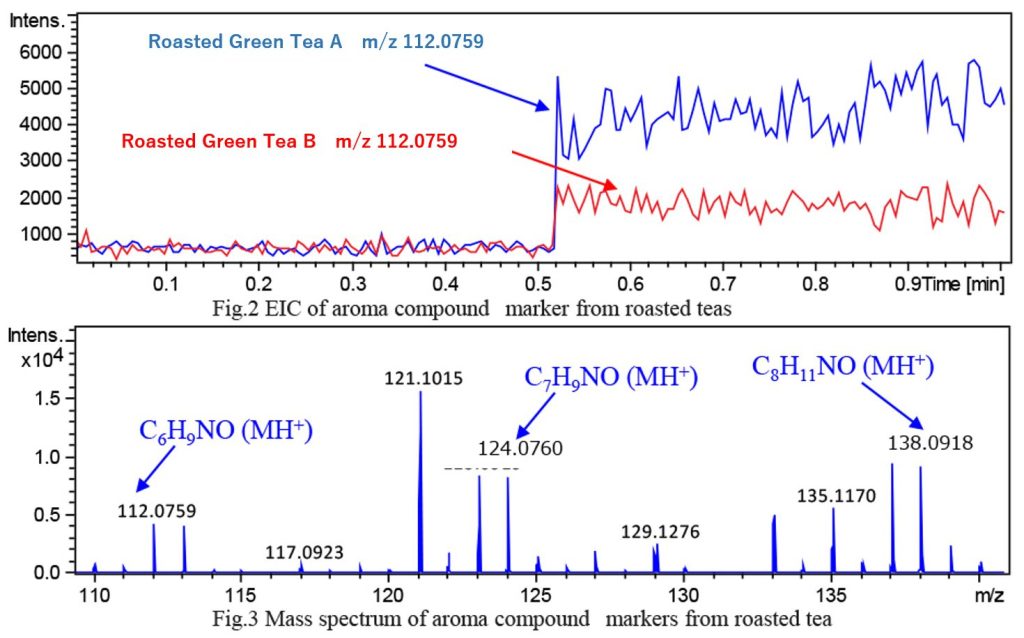The Aroma of Roasted Green Tea
Purpose
A comparison analysis of the aromatic components in two types of roasted green tea was conducted using a time-of-flight mass spectrometer as the detector.
Methods
| Ion source | ChemZo (BioChromato) |
| Mass Spectrometer | compact QTOF (Bruker) |
| Measurement Method | Roasted green tea, kept at room temperature (in a PET bottle), was transferred to a beaker, and the aroma was introduced to the mass spectrometer via a tube. |
| Data Processing | Aromatic components were extracted from the mass spectrum using Spectra Scope and Data Analysis software. |
Results
Fig. 1 shows the extracted ion chromatograms (EIC) of representative aroma components detected from two types of roasted green tea. Both were detected with high sensitivity immediately upon starting the measurement, and the same intensity was maintained even after 30 seconds. Although a slight intensity variation was observed for roasted green tea A, both teas showed similar intensities for these marker ions. On the other hand, the marker at m/z 112.0759 was detected in both teas, but the intensity from roasted green tea B was approximately half that of roasted green tea A. Even when the same aromatic components are present, such differences in intensity may characterize the taste and flavor of the beverage. Fig. 3 shows the mass spectrum of the marker and the chemical formula candidates determined from the precise mass as MH+.


ChemZo Product Page / Applications
